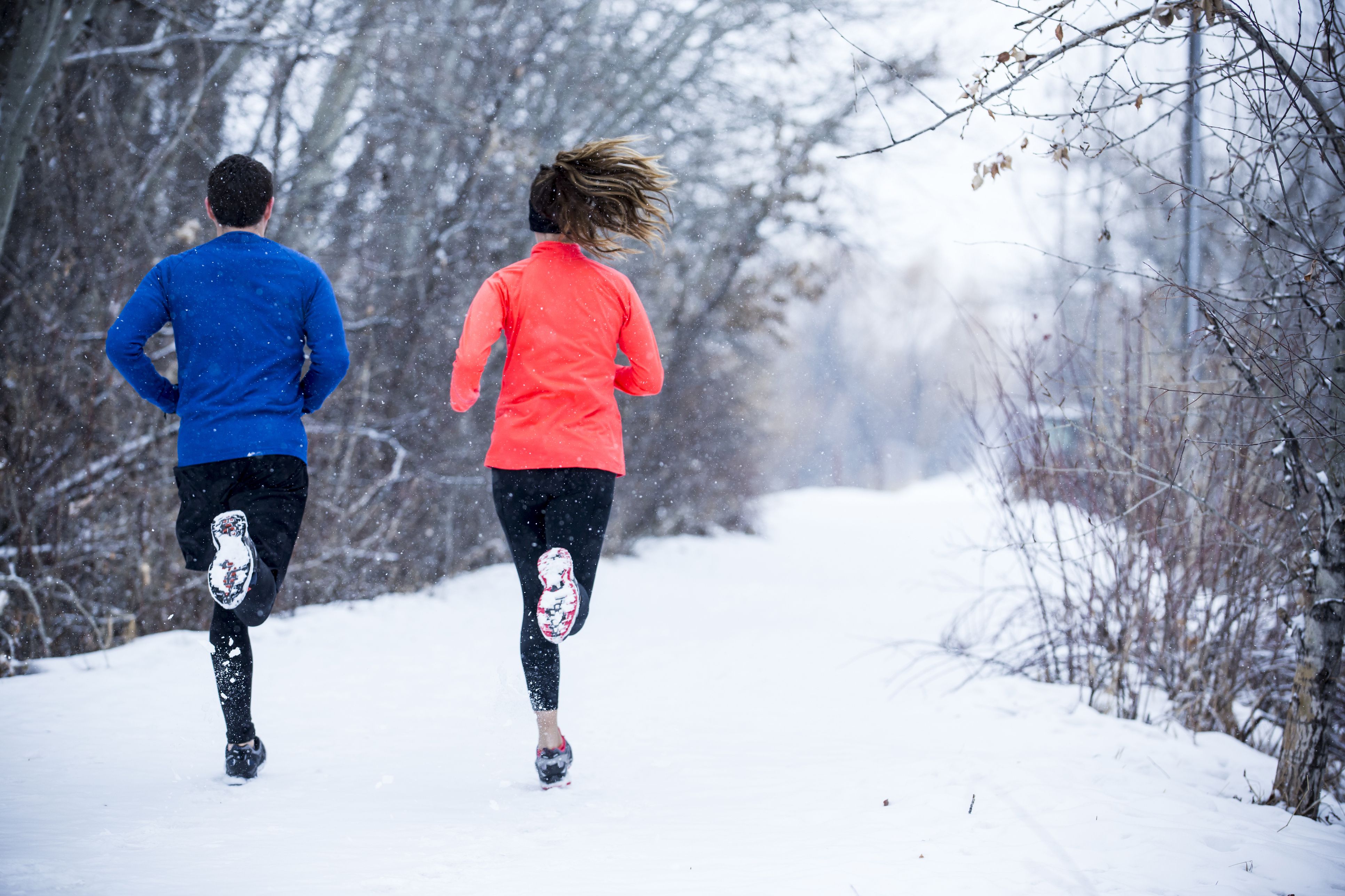When the snow falls, the treadmill calls.
The first snow often scares runners away from the road and inside to the treadmill. As winter sets in, the mild running days of autumn are replaced by brisk winds, icy streets, and gloomy, gray skies. For outdoor runners, the cold brings numb fingers, snow crowding the sidewalks, and snow-blurred vision. Meanwhile, snowfall doesn’t affect the condition of your favorite treadmill at the gym, where the temperature is perfectly maintained at your convenience. It’s not surprising that people choose the treadmill over running out in New England winters – the indoors are well within our comfort zone. But, as someone who runs outdoors year-round, I encourage all indoor-runners to be a little more daring.
We all know that exercise enhances both our mental and physical health. However, there are countless studies showing that outdoor exercise provides much greater benefits than indoor exercise. During the winter in New England, it’s easy to go through a day to day routine without entering out into the natural light of day. Many people have a house-work-gym-house schedule, where the only time they take a breath of fresh air is when walking from the house to the car and back again. But, if those people substitute the treadmill run at the gym for a run outside, that adds a sufficient chunk of time in daylight, breathing in the crisp, fresh air, to your daily schedule. Running year-round also improves adaptability. We learn to acclimatize to any conditions, and at the same time, we build mental toughness. Going for a run takes motivation on its own. But forcing yourself out the door into the snow for a long run, away from the cozy comfort a trusty treadmill, takes a plethora of willpower, and a whole lot of grit. Consequently, winter runners are the toughest of the tough. The familiar saying, “when the going gets tough, the tough get going,” is especially applicable when it comes to winter running. Lastly, consider the feeling of accomplishment after a long run outside verses a long run inside. When I come home after a run outside in sub-freezing temperatures, I feel rather impressive, and my rosy red cheeks are proof of the challenge I have just overcome. I feel more deserving of a hot shower, snug sweatpants, and warm cup of tea than had I run inside in an easy, monitored running environment. The cold weather does come with risks. For example, we are more likely to lose the feeling in our hands, to face tight muscles at the beginning of a run, and for tears to collect in our eyes from the frigid wind gusts. But taking the risk and learning to adjust to new (sometimes extreme) conditions makes us stronger runners, and more versatile as individuals.
I dare you: brave the cold. Buy some quality sports gloves, perhaps an under armour and an ear warmer. Prepare to join the tough-runners community. And who knows, you may learn to love a snowy run! The roads and trails are awaiting; now it’s up to you. Are you tough enough to be a winter runner?

